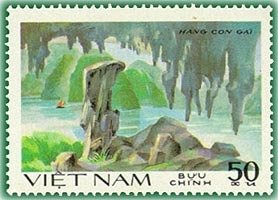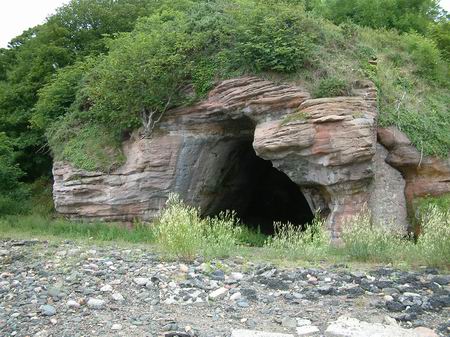Stamp: Con-gai Cave (Vietnam 1984)
Con-gai Cave (Vietnam 1984)
30 July (Vietnam ) within release Scenes of Ha Long bay goes into circulation Stamp Con-gai Cave face value 50 Vietnamese xu
| Stamp Con-gai Cave in catalogues | |
|---|---|
| Michel: | Mi:VN 1467 |
Stamp is square format.
Also in the issue Scenes of Ha Long bay:
- Stamp - Con-gai Cave face value 50;
- Stamp - Bo-Nau Cave face value 50;
- Stamp - Dua Rock face value 50;
- Stamp - Yen-ngua Mountain face value 50;
- Stamp - Ga-choi Rock face value 1;
- Stamp - HON COC face value 1;
- Stamp - Dinh-huong Rock face value 2;
- Stamp - Su-tu Rock face value 3;
- Stamp - Bai-tho Rock face value 8;
- Stamp - Am Rock face value 5;
Stamp Con-gai Cave it reflects the thematic directions:
A landscape is the visible features of an area of land, its landforms and how they integrate with natural or man-made features. A landscape includes the physical elements of geophysically defined landforms such as (ice-capped) mountains, hills, water bodies such as rivers, lakes, ponds and the sea, living elements of land cover including indigenous vegetation, human elements including different forms of land use, buildings and structures, and transitory elements such as lighting and weather conditions. Combining both their physical origins and the cultural overlay of human presence, often created over millennia, landscapes reflect a living synthesis of people and place that is vital to local and national identity. The character of a landscape helps define the self-image of the people who inhabit it and a sense of place that differentiates one region from other regions. It is the dynamic backdrop to people’s lives. Landscape can be as varied as farmland, a landscape park, or wilderness. The earth has a vast range of landscapes, including the icy landscapes of polar regions, mountainous landscapes, vast arid desert landscapes, islands and coastal landscapes, densely forested or wooded landscapes including past boreal forests and tropical rainforests, and agricultural landscapes of temperate and tropical regions.
A cave or cavern is a natural void in the ground, specifically a space large enough for a human to enter. Caves often form by the weathering of rock and often extend deep underground. The word cave can refer to smaller openings such as sea caves, rock shelters, and grottos, that extend a relatively short distance into the rock and they are called exogene caves. Caves which extend further underground than the opening is wide are called endogene caves
The United Nations Educational, Scientific and Cultural Organization (UNESCO; pronounced /juːˈnɛskoʊ/) is a specialized agency of the United Nations (UN) with the aim of promoting world peace and security through international cooperation in education, arts, sciences and culture. It has 194 member states and 12 associate members,as well as partners in the non-governmental, intergovernmental and private sector. Headquartered in Paris, France, UNESCO has 53 regional field offices and 199 national commissions



